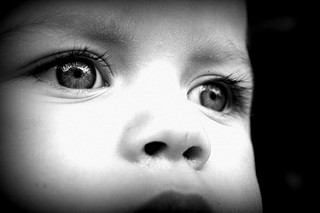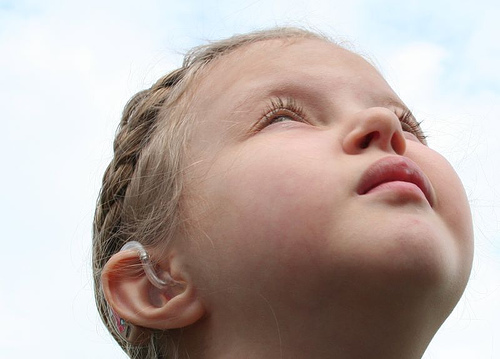Behaviors that May Be Signs of Autism


Written and verified by preschool graduate Marisol Rendón Manrique
As parents it’s natural to worry about our children having health issues. When referring to autism, it’s best to detect it as soon as possible (before 18 months). In order to diagnosis this disorder, we must first know what the signs of autism are.
If autism is diagnosed later on, don’t worry, treatment can still be carried out at any stage. The effects of the disorder can be reduced substantially so your child can grow and learn in a healthy way.
What is autism?
Before mentioning the main signs of autism, we should first begin by covering basic knowledge about the condition.
Since autism shares signs and symptoms with other conditions that affect a child’s development, its diagnosis can at times be tricky.
In simple terms, autism is known as a group of disorders in brain development and it has characteristics which are determined by the severity of the condition.
Autism can manifest itself as difficultly interacting socially and producing verbal and non-verbal language. Another sign of autism is the performance of repetitive behaviors.
Signs of autism in younger children:
The following are actions that children with autism rarely perform:
- They don’t make eye contact (when you talk to them, feed them or play with them).
- They don’t smile when other people around them smile.
- Unresponsiveness when they are called by their name or when they hear a familiar voice.
- They don’t follow objects that you wave in front of them.
- They don’t use gestures to communicate. For example, moving their hands when saying hello or goodbye.
- They don’t look at objects when you point at them with your hands or other parts of your body.
- They don’t make sounds to get your attention when they need something.
- Sometimes they are unresponsive to hugs or other affectionate gestures.

- When it’s play time they don’t imitate the movements or facial expressions directed towards them.
- They don’t raise their hands when they want to be picked up.
- They don’t play with others or show interest or joy during play time.
- Autistic children don’t ask for help when unable to undertake actions on their own.
Warning signs of autism that you should pay attention to, according to age group.
6 months. They don’t smile frequently or show expressions of happiness.
9 months. They don’t produce sounds, smiles or facial expressions in order to communicate.
12 months. They don’t respond to their name. They also don’t start babbling (the first stage of oral communication). Unresponsiveness to gestures and actions such as pointing and picking up objects.
16 months. At this age they still haven’t started producing words.
24 months. They haven’t started building their first sentences (composed of more than two words).
Signs of autism in children older than two

- They seem uninterested or unaware that people are around them.
- No interest is shown in socializing or interacting with others.
- They prefer not to be touched, carried or showed affection to.
- They usually don’t get involved in group games. When it’s play time they don’t imitate children their age or use toys in a creative way.
- They have difficulties talking about their feelings.
- It seems like they don’t listen when they are being spoken to.
- They don’t share their achievements or interests with people that are closest to them.
- They speak with an unusual tone and rhythm.
- Phrase repetition is also characteristic of autism at this age.
- When asked a question, they simply repeat it or don’t give a clear answer.
- They refer to themselves in the third person.
- When speaking they make many grammatical errors.
- They find it difficult to talk about their needs and desires.
- They find it hard to execute simple instructions.
- Avoidance of eye contact.
- They use facial expressions that don’t align with what they are saying.
- Their behavior can be somewhat robotic since they don’t make use of gestures when communicating.
- They don’t have good posture.
- They follow a very strict routine.
- Difficulty adapting to changes in the way they do things.
- They arrange things very meticulously.
As parents it’s natural to worry about our children having health issues. When referring to autism, it’s best to detect it as soon as possible (before 18 months). In order to diagnosis this disorder, we must first know what the signs of autism are.
If autism is diagnosed later on, don’t worry, treatment can still be carried out at any stage. The effects of the disorder can be reduced substantially so your child can grow and learn in a healthy way.
What is autism?
Before mentioning the main signs of autism, we should first begin by covering basic knowledge about the condition.
Since autism shares signs and symptoms with other conditions that affect a child’s development, its diagnosis can at times be tricky.
In simple terms, autism is known as a group of disorders in brain development and it has characteristics which are determined by the severity of the condition.
Autism can manifest itself as difficultly interacting socially and producing verbal and non-verbal language. Another sign of autism is the performance of repetitive behaviors.
Signs of autism in younger children:
The following are actions that children with autism rarely perform:
- They don’t make eye contact (when you talk to them, feed them or play with them).
- They don’t smile when other people around them smile.
- Unresponsiveness when they are called by their name or when they hear a familiar voice.
- They don’t follow objects that you wave in front of them.
- They don’t use gestures to communicate. For example, moving their hands when saying hello or goodbye.
- They don’t look at objects when you point at them with your hands or other parts of your body.
- They don’t make sounds to get your attention when they need something.
- Sometimes they are unresponsive to hugs or other affectionate gestures.

- When it’s play time they don’t imitate the movements or facial expressions directed towards them.
- They don’t raise their hands when they want to be picked up.
- They don’t play with others or show interest or joy during play time.
- Autistic children don’t ask for help when unable to undertake actions on their own.
Warning signs of autism that you should pay attention to, according to age group.
6 months. They don’t smile frequently or show expressions of happiness.
9 months. They don’t produce sounds, smiles or facial expressions in order to communicate.
12 months. They don’t respond to their name. They also don’t start babbling (the first stage of oral communication). Unresponsiveness to gestures and actions such as pointing and picking up objects.
16 months. At this age they still haven’t started producing words.
24 months. They haven’t started building their first sentences (composed of more than two words).
Signs of autism in children older than two

- They seem uninterested or unaware that people are around them.
- No interest is shown in socializing or interacting with others.
- They prefer not to be touched, carried or showed affection to.
- They usually don’t get involved in group games. When it’s play time they don’t imitate children their age or use toys in a creative way.
- They have difficulties talking about their feelings.
- It seems like they don’t listen when they are being spoken to.
- They don’t share their achievements or interests with people that are closest to them.
- They speak with an unusual tone and rhythm.
- Phrase repetition is also characteristic of autism at this age.
- When asked a question, they simply repeat it or don’t give a clear answer.
- They refer to themselves in the third person.
- When speaking they make many grammatical errors.
- They find it difficult to talk about their needs and desires.
- They find it hard to execute simple instructions.
- Avoidance of eye contact.
- They use facial expressions that don’t align with what they are saying.
- Their behavior can be somewhat robotic since they don’t make use of gestures when communicating.
- They don’t have good posture.
- They follow a very strict routine.
- Difficulty adapting to changes in the way they do things.
- They arrange things very meticulously.
All cited sources were thoroughly reviewed by our team to ensure their quality, reliability, currency, and validity. The bibliography of this article was considered reliable and of academic or scientific accuracy.
- Álvarez, I., & Arroyo Ignacio, C. (2016). Bases genéticas del autismo. Acta Pediátrica de México. https://doi.org/10.18233/apm31no1pp22-28
- Assumpção Jr, F. B., & Pimentel, A. C. M. (2000). Autismo infantil. Brazilian Journal of Psychiatry, 22, 37-39. http://www.scielo.br/scielo.php?pid=S1516-44462000000600010&script=sci_arttext&tlng=pt
- Cuxart i Fina, F. (2000). El Autismo : aspectos descriptivos y terapéuticos. Aljibe.
- Ritvo ER, Ornitz EM. (1976). Autism: diagnosis, current research and management. New York: Spectrum.
- Rivière, A. (2001). Autismo. Orientaciones para la intervención educativa. Madrid: Trotta. SA Cómo potenciar la comunicación en el alumnado con trastorno del espectro autista.
- Morrison, J. (2015). DSM-5® Guía para el diagnóstico clínico. Editorial El Manual Moderno.
This text is provided for informational purposes only and does not replace consultation with a professional. If in doubt, consult your specialist.








